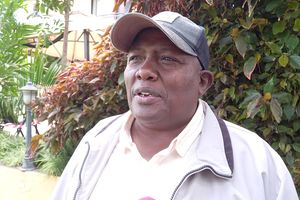Premium
Explaining Hatelex, a lexicon of hate speech terms in Kenya

In publishing the hate speech lexicon, the NCIC intended to inform the public, political actors and the various media how certain words are abused.
What you need to know:
- The NCIC, therefore, is not the primary determinant of the words that make it to the list.
- For Kenya to be peaceful, we must get to a point where the NCIC Hatelex is empty.
A lexicon is defined as a vocabulary of a person, language or branch of knowledge. Therefore, in publishing Hatelex, the National Cohesion and Integration Commission (NCIC) is simply creating a collection of words which, according to its research, have been used in hateful ways.
As such, the lexicon is not a legal list of terms that are banned from use but rather a list of words that are being used outside of their normal use to propagate hateful messages usually in a nuanced manner.
In publishing the hate speech lexicon, the NCIC intended to inform the public, political actors and the various media how certain words are abused.
The use of words is not general but rather specific to certain regions and domains within which the meaning becomes quite portable. For example, the term madoadoa can be used in a non-hateful way to describe a dress that has spots. However, the same word becomes hate speech when used to describe the political desire to have a homogeneous region for the purpose of elections.
We know from history that every genocide and hate crime is preceded by a narrative where words are given special meaning and gravitas outside of their normal use.
When we unveiled the Hatelex on April 8, 2022, I stated that the NCIC was not banning the use of words but rather cautioning the users against using the words as a precursor to ethnic, political or class violence.
Hateful use of words
We used a scientific and participatory approach to arrive at the 523 words in the Hatelex.
Kenyans were asked in a questionnaire to cite words that were used to incite hate or provoke violence.
Hatelex is not a fixed document. Instead, it is a living document that will be updated as more research data and new words are used as others go into disuse.
It is not a political tool but rather a signpost warning against the hateful use of certain words.
The NCIC, therefore, is not the primary determinant of the words that make it to the list. Instead, we follow the conversations and narratives and identify words that are likely to be used in hate speech.
For Kenya to be peaceful, we must get to a point where the NCIC Hatelex is empty. Kenyans should help ensure no one uses these words in a hateful manner.
Dr Kobia is chairman, National Cohesion and Integration Commission





